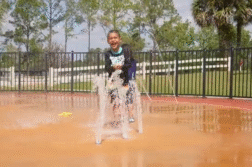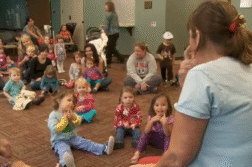MIAMI, Fla. (Ivanhoe Newswire) — The injury can have your little athlete sitting on the sidelines. ACL tears normally require surgery, and the rate of injury has skyrocketed by nearly 400 percent in adolescents over the past 15 years. Now see how a new technique is protecting children’s knees and getting them back to the sports they love!
“I like to play soccer, basketball, I like to run a lot.” Said Matthew Lefkowitz
Like most eleven-year- old’s, Matthew Lefkowitz was super active, until the day he tore his ACL playing soccer.
He shared, “It was really painful. I was crying a lot.”
In most cases, doctors recommend surgery to reconstruct the ligament that provides crucial stability to the knee. But when it comes to children, it’s important to protect their growth plates.
Jeremy Frank, MD, a Pediatric Sports Medicine Surgeon at Joe DiMaggio Children’s Hospital said, “So you don’t injure them, causing one leg to be longer than the other, or even grow at an abnormal angle.”
That’s why Dr. Frank is using a specialized technique to rebuild a child’s ACL.
Dr Frank explained, “we’re taking a strip of tissue from the side of the thigh, that tissue is called the iliotibial band, or IT band.”
The surgeon then wraps that tissue around the thighbone, through the knee, and stitches it into the top of the shin bone.
“Therefore, we’re not drilling any holes whatsoever in the bones, and not risking any injury to the growth plate,” Dr. Frank said.
Of course, Matthews mom, Nina Lefkowitz, was still worried when her son went in for surgery.
“Would he come out and be able to play and run the same way he always did?” said Nina.
A year late Matthew is back on the field!
“I recently just got cleared by Dr. Frank that I don’t need any brace anymore to play sports,” said Matthew.
He wants other kids not to be scared if they need ACL surgery: “I feel great. I feel like it never happened.”
Getting kids back to the sport they love.
The recovery is still the same as any ACL procedure: physical therapy for up to five months and light activity like swimming or biking three months after surgery. Most kids are back to their sport of choice within a year after the injury. Dr. Frank says the re-rupture rate in children is between five and ten percent.
Contributors to this news report include: Janna Ross, Field Producer; Judy Reich, Videographer; Cyndy McGrath, Supervising Producer; Hayley Hudson, Assistant Producer; Roque Correa, Editor.
To receive a free weekly e-mail on Medical Breakthroughs from Ivanhoe, sign up at: http://www.ivanhoe.com/ftk
MEDICAL BREAKTHROUGHS
RESEARCH SUMMARY
TOPIC: A BETTER ACL SURGERY FOR KIDS
REPORT: MB #4482
BACKGROUND: Knee injuries can happen in active kids, especially athletes, and a torn anterior cruciate ligament (ACL) — a ligament that helps give the knee its stability — is one of the most serious types of knee injuries. Kids who get ACL injuries tend to play contact sports (like football and basketball) or so-called “cutting” sports (like soccer and baseball that feature swift, abrupt movements such as pivoting, stopping, or turning on a dime). The injury can also happen with certain movements, like when a child jumps and lands hard on his or her feet. If the quadriceps muscles aren’t strong enough, a movement an athlete is used to doing can suddenly put too much pressure on the knee joint, causing the ACL, a rope-like band of tissue, to tear or break apart. ACL injuries can be very painful, especially during cutting and pivoting movements. Depending on the age of the child and the severity of the injury, a torn ACL often benefits best from surgery as well as six to 12 months of rehabilitation. This treatment can help prevent a player from getting arthritis or further knee damage.
(Source: https://kidshealth.org/en/parents/acl-injuries.html)
TREATMENT: Treatment for ACL tears depends on the age of the athlete and the sports that the athlete plays. Conservative treatment includes activity modification, rehabilitation exercises, and bracing during activity. Surgical treatment involves creating a new ligament from a tendon in the patient’s knee or from a tissue donor. Surgery is ideally done after the athlete has recovered from the effects of the initial injury. If the knee is still swollen, stiff, or weak at the time of surgery, any benefits from early surgical treatment will be lost by delays in surgical recovery. Young athletes may choose to hold off on surgery until their bones are finished growing to reduce the risk of growth plate injury from the surgery. New surgeries are being developed to avoid this. Most athletes who participate in running, jumping, pivoting, or contact sports are likely to need surgery to continue playing their sports. With proper surgical treatment, about 90% of athletes are able to return to their sports at approximately six months after surgery.
IT BAND: If a child is young, surgeons will use a technique that spares the growth plate. One example is iliotibial (IT) band reconstruction. The IT band is a thick band of tissue that spans the leg from the lower pelvis to the bottom of the shinbone. Tightening this tissue over the kneecap helps to stabilize the knee and prevent the tibia from moving too far forward. After surgery, a child will need to walk with the assistance of crutches, limit physical activity, and wear a full-leg brace for 4 to 6 weeks, depending on what the surgeon advises.
(Source: https://kidshealth.org/en/parents/acl-injuries.html)
FOR MORE INFORMATION ON THIS REPORT, PLEASE CONTACT:
Stu Oppenheim, Public Relations
954-815-2303
If this story or any other Ivanhoe story has impacted your life or prompted you or someone you know to seek or change treatments, please let us know by contacting Marjorie Bekaert Thomas at mthomas@ivanhoe.com




